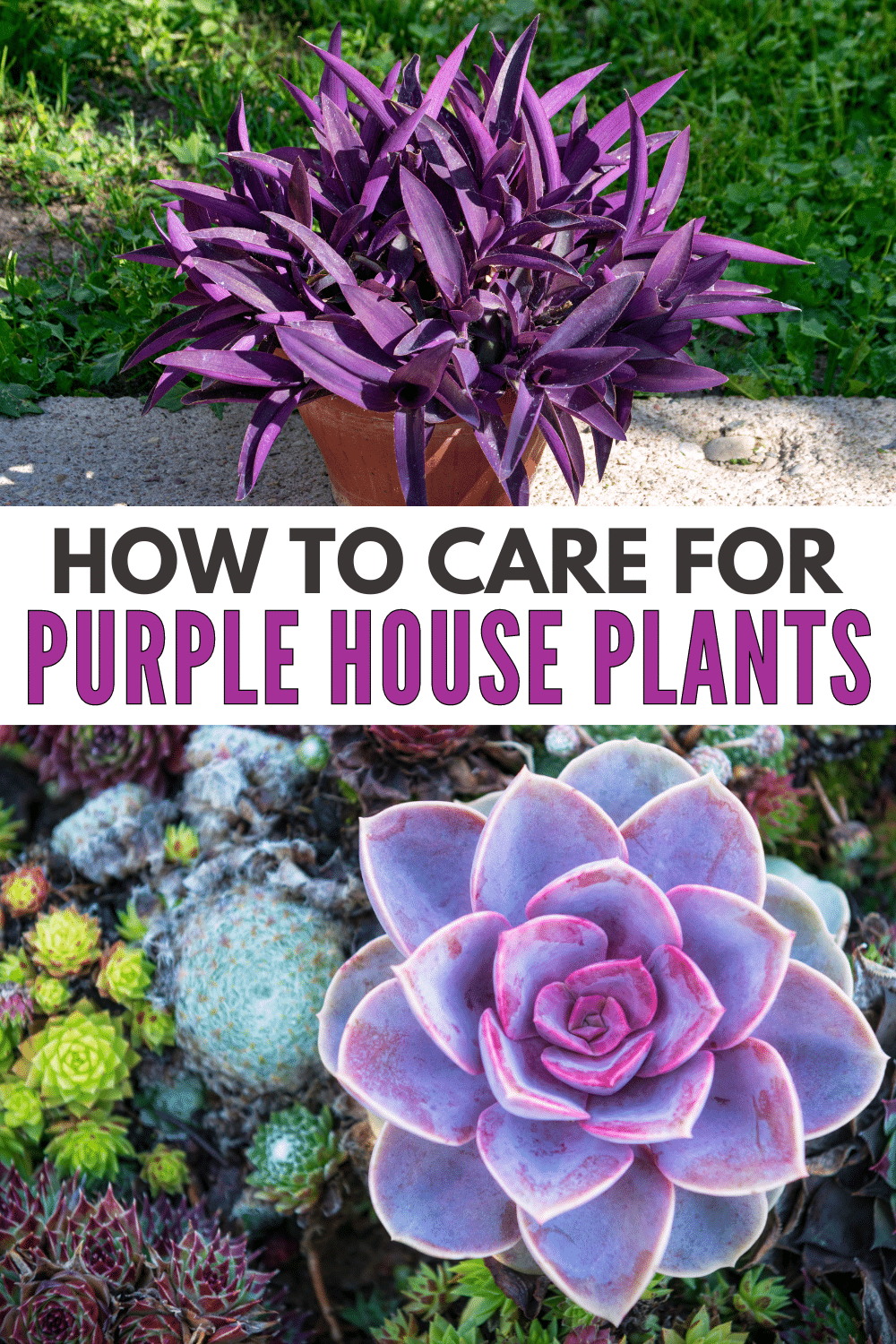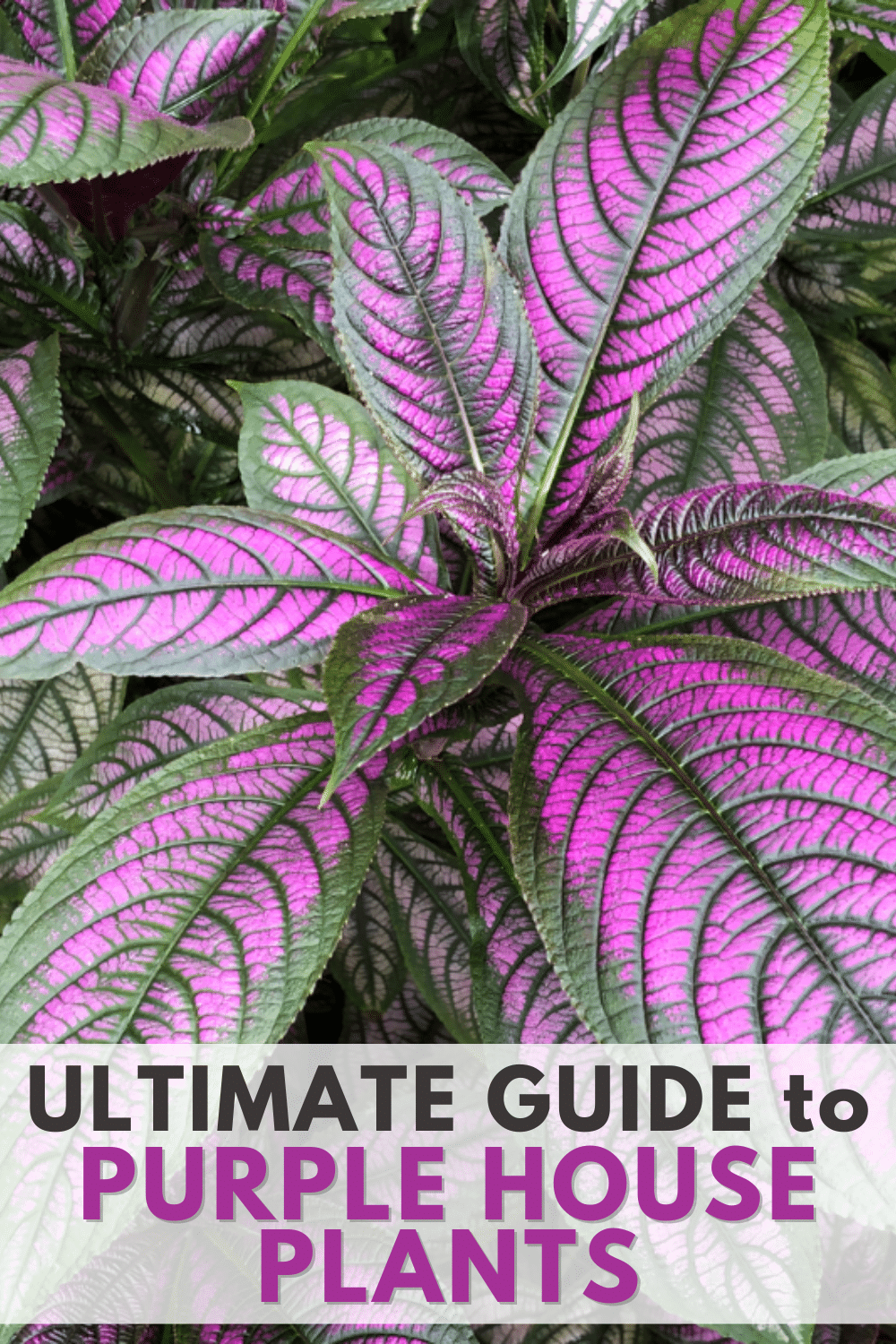Hey mommas, are you looking for indoor plants that can add some color to your home? Purple house plants might be the way to go. These gorgeous plants bring more than a pop of color into an indoor space, and they also have several benefits!
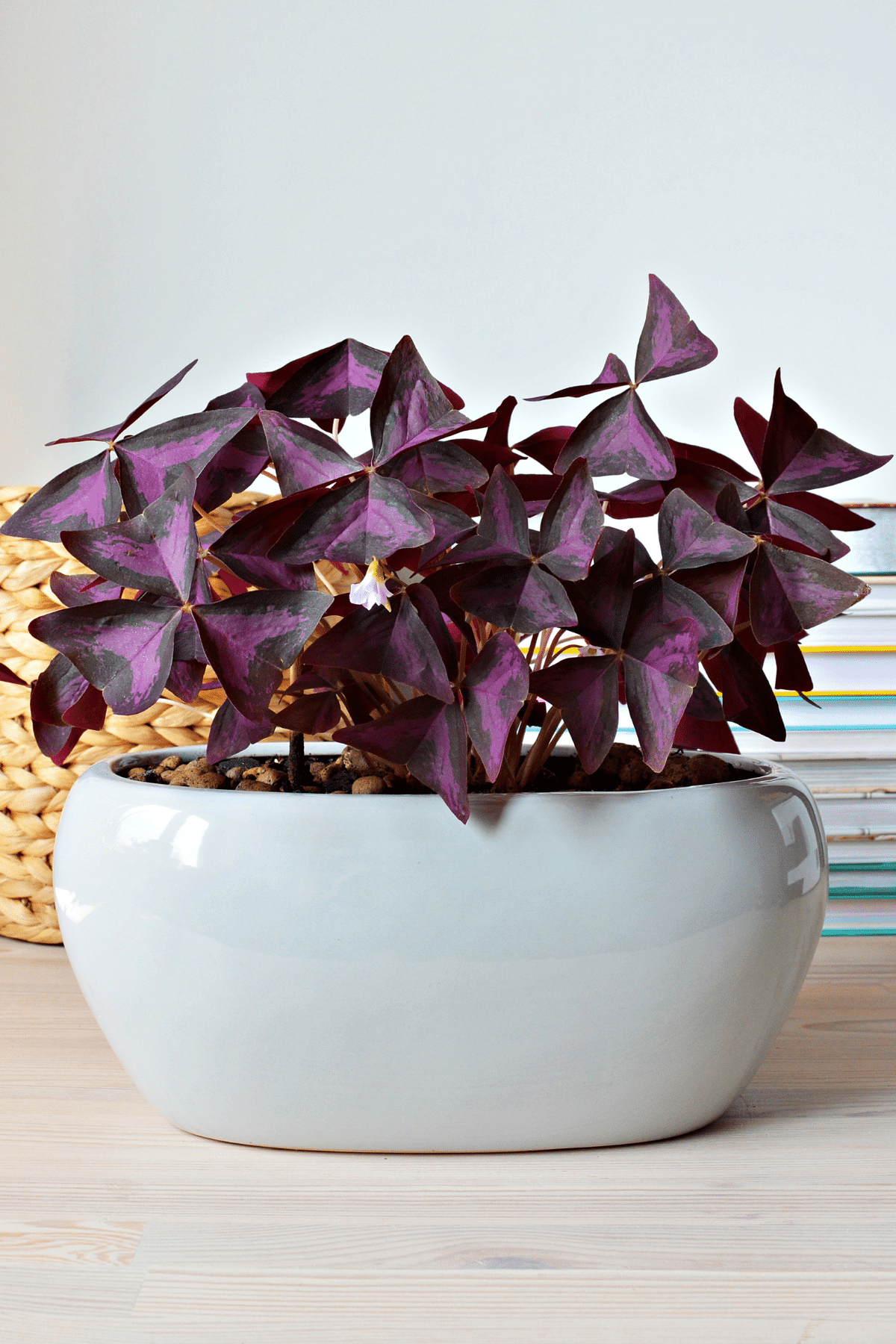
Keep reading to explore some of the most beautiful purple house plants that you can have in your home, their benefits, and how to take care of them properly. I have a couple of them at home, and they’re worth caring for!
Jump to:
Why Choose Purple House Plants?
Improves Air Quality
Indoor plants, in general, have numerous benefits other than just appearance. For one, they help improve your indoor air quality. These plants aid in removing harmful toxins in the air, including formaldehyde and benzene.
Provides Gorgeous Color
Fun and unconventional, purple leaves on plants add a touch of contrast to the colors of your home, making it feel livelier and more vibrant. If you’re looking for purple house plants, you’ll be glad to know that you can find them in all shapes, shades, and sizes.
Fancy a dark purple or maybe a lavender one? Want a low-maintenance plant or something more of a challenge to grow? You can easily find a purple indoor plant that suits your style and needs. You can even find unique-looking purple plants, such as ones with purple undersides and stems.
Creating a Relaxing Atmosphere
Having indoor plants with purple leaves at home can help create a calm and relaxed environment. Their gorgeous color is believed to promote calmness and relaxation. On top of that, just adding plants into a room can help lower noise levels. Therefore, they can help create a more serene atmosphere right in your home.
7 Best Purple House Plants
From dark purple leaves to flowering plants, you can choose from many purple plants that can be added to a room. Here are some of my favorite purple house plants that you can check out!
Purple Passion Plant
Also known as Gyanyura aurantiaca, this striking purple plant is not only pretty, it’s also low maintenance. What makes it an incredible addition to any home is its unique appearance. This interesting plant has green and purple leaves, with the top being a deep green while the underside is a bright color purple.
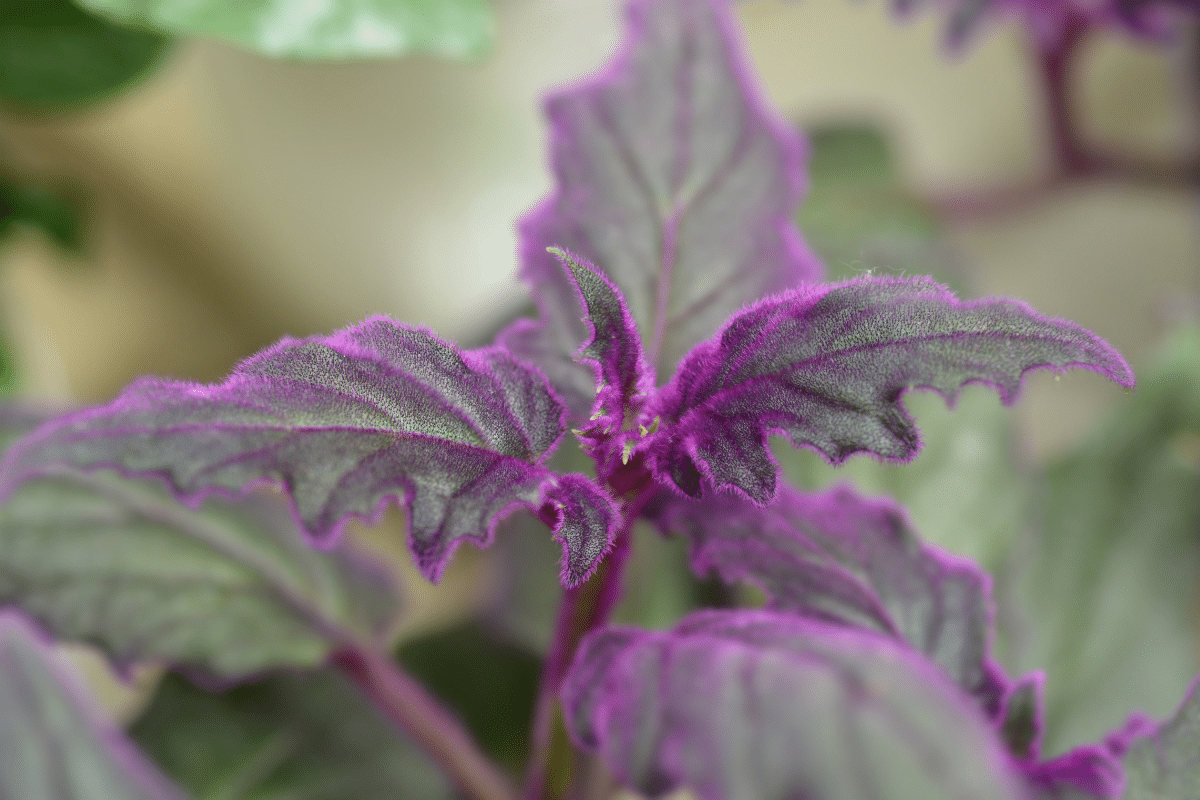
Its unique leaf coloring is also complemented by its velvet-like texture. On top of this, its purple stems are as striking as its leaves. If you want to take care of this beautiful purple house plant, do note that it thrives in high humidity. It also loves bright but indirect sunlight.
Purple Heart Plant
Looking for a plant to grow at home? Check out the purple heart plant, a.k.a. Setcreasea pallida or Tradescantia pallida. This houseplant is loved by many for its small deep purple leaves. You’ll adore its cute pink-to-light-purple flowers.
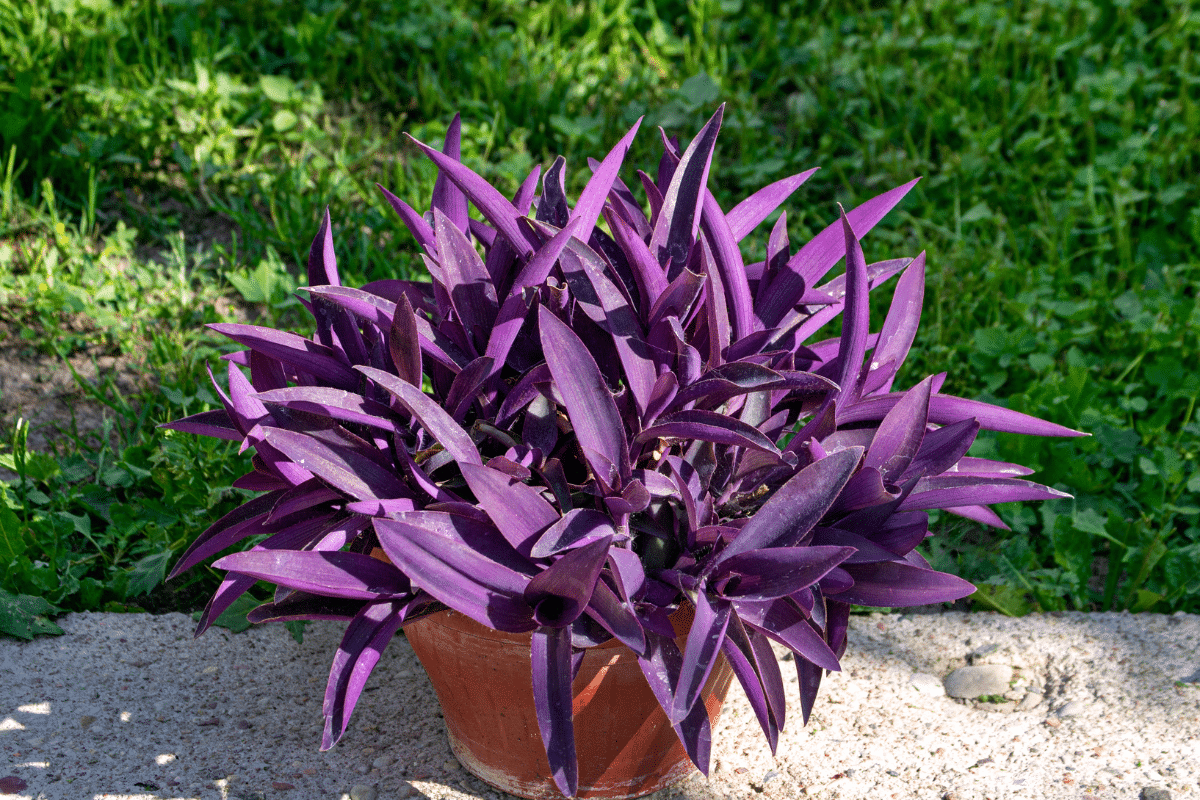
If you’re hunting for a hearty and durable purple plant, you should check this one out. You can keep this plant and easily help it thrive in many different conditions. To keep this plant healthy, place it under bright, indirect sunlight. While it’s commonly placed in containers, it also does well as a hanging plant.
Purple Waffle Plant
Another popular houseplant that has a purple color is Hemigraphis exotica, also known as the waffle plant. This unique plant’s main draw is its textured foliage resembling waffles. Its leaves have a light purple hue and work well if you want to add both texture and color to a room.
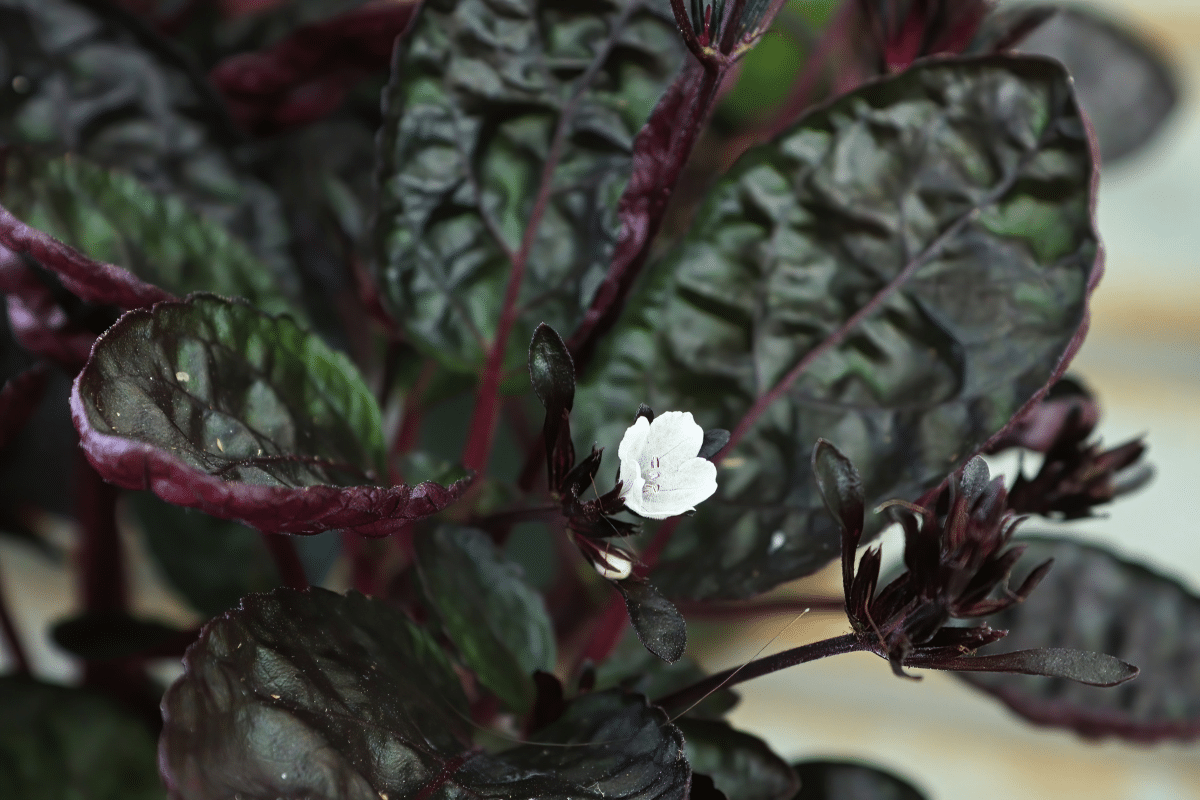
Help it thrive by imitating humid conditions. Also, remember to water it regularly and place it under bright but indirect light.
Purple Pearl Succulent
Echeveria, more commonly known as purple pearl is one of the most popular succulents that you can keep at home. This little plant, grows only 6 to 8 inches and features beautiful purple leaves. It produces purple flowers that look incredible with its foliage.
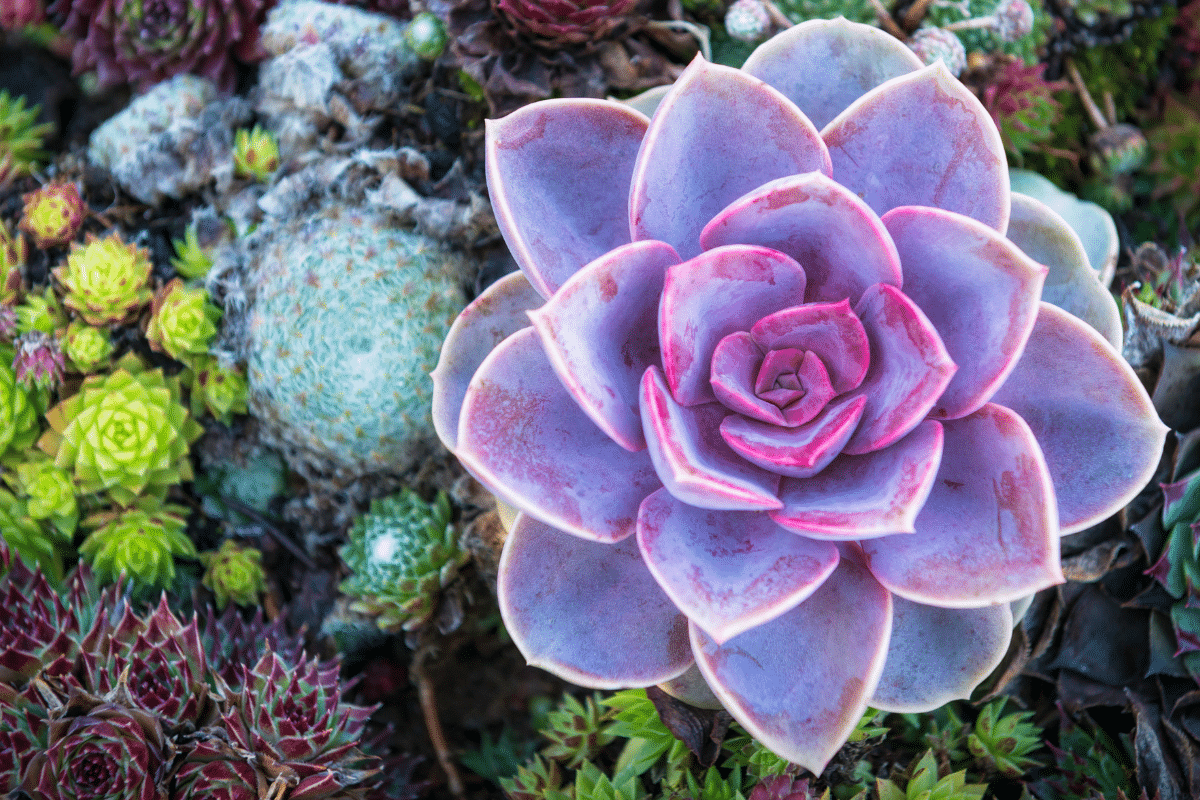
If you want to add this purple succulent to your home collection, do know that it loves bright indoor lights. Alternatively, you can also put it under low natural light. Also, remember that this small house plant will need well-draining soil.
Persian Shield Plant
Also called Strobilanthes dyerianus, the Persian Shield plant is an interesting specimen to add to your room. This plant is native to Myanmar and is easily recognizable thanks to its stunning purple leaves.
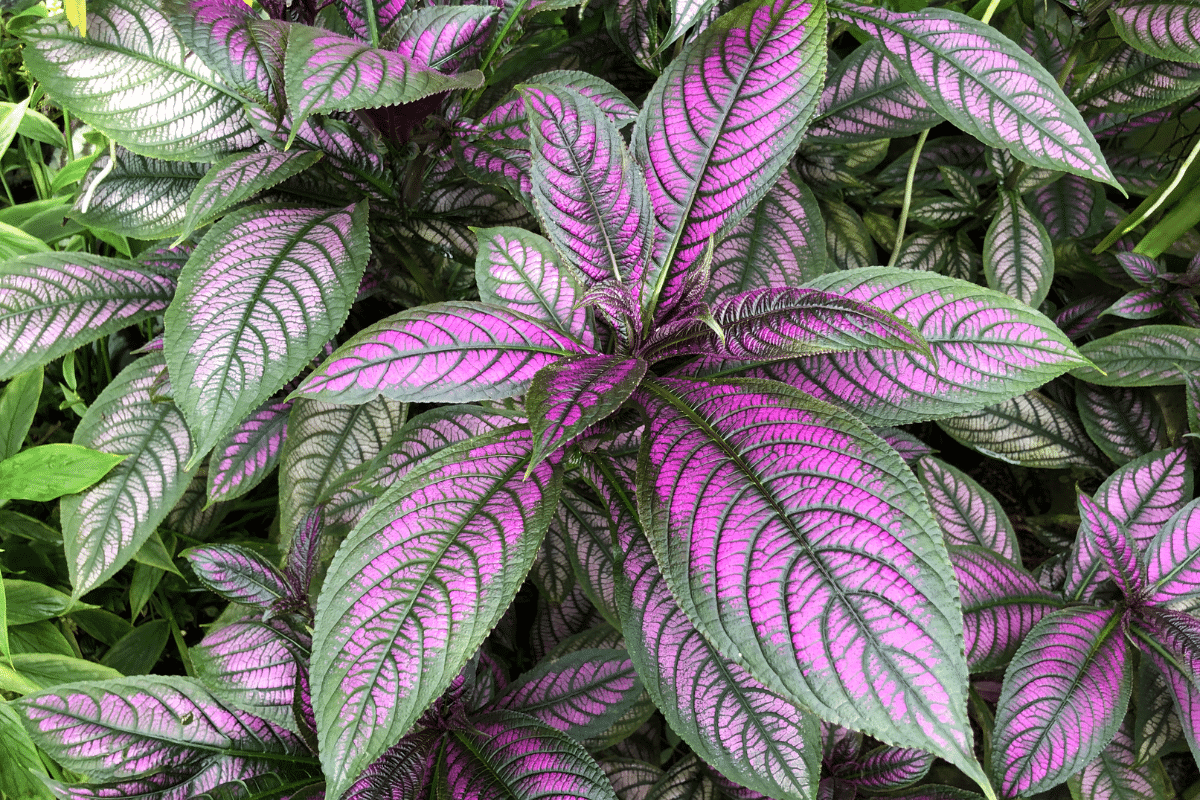
Looking after this plant is a breeze. Since this is a tropical plant, it thrives in warm and humid environments.
Purple Shamrock
Add interest to any indoor space with the Purple Shamrock plant, also known as the Oxalis triangularis. This stunning indoor plant is a beautiful option for any home, thanks to its purple foliage and delicate pink or white flowers. This plant is easy to care for and does best in bright, indirect sunlight.
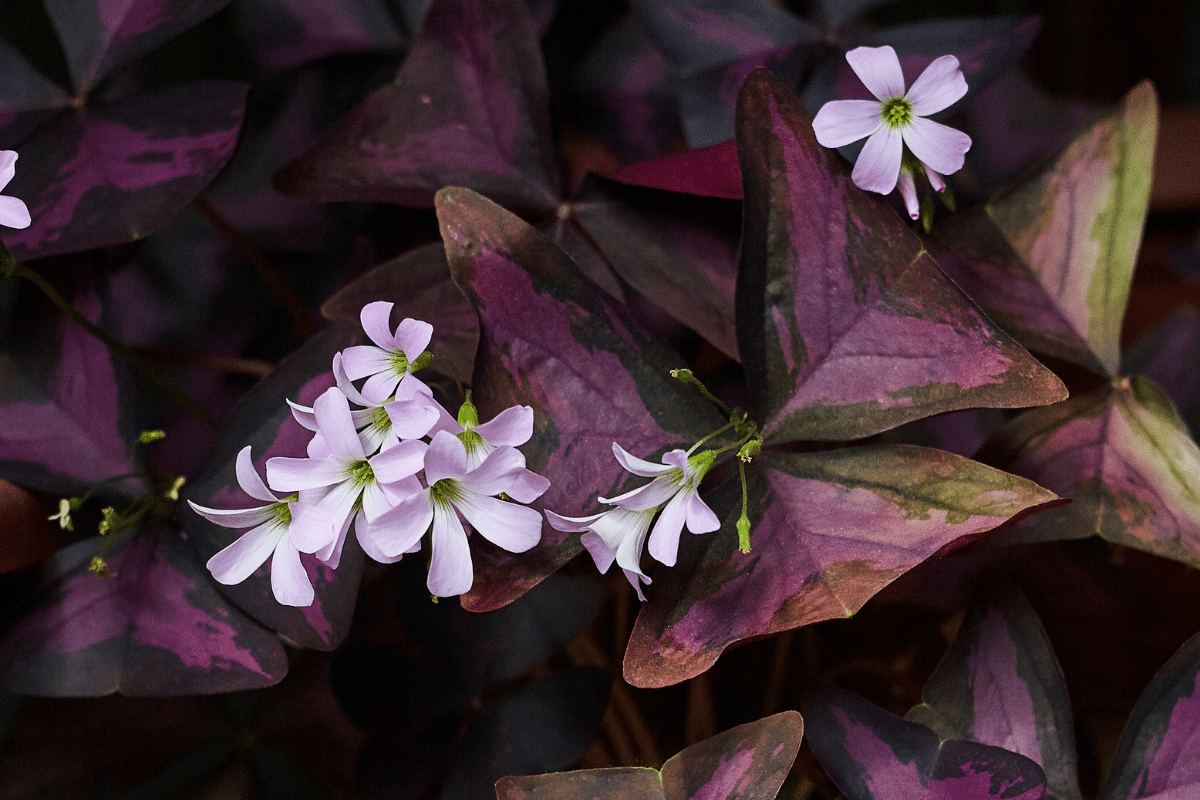
Wandering Jew Plant
Another eye-catching purple stunner grown as houseplants is the Wandering Jew plant or Tradescantia zebrina. It’s a trailing plant, so I think you’d find it works well in a hanging basket.
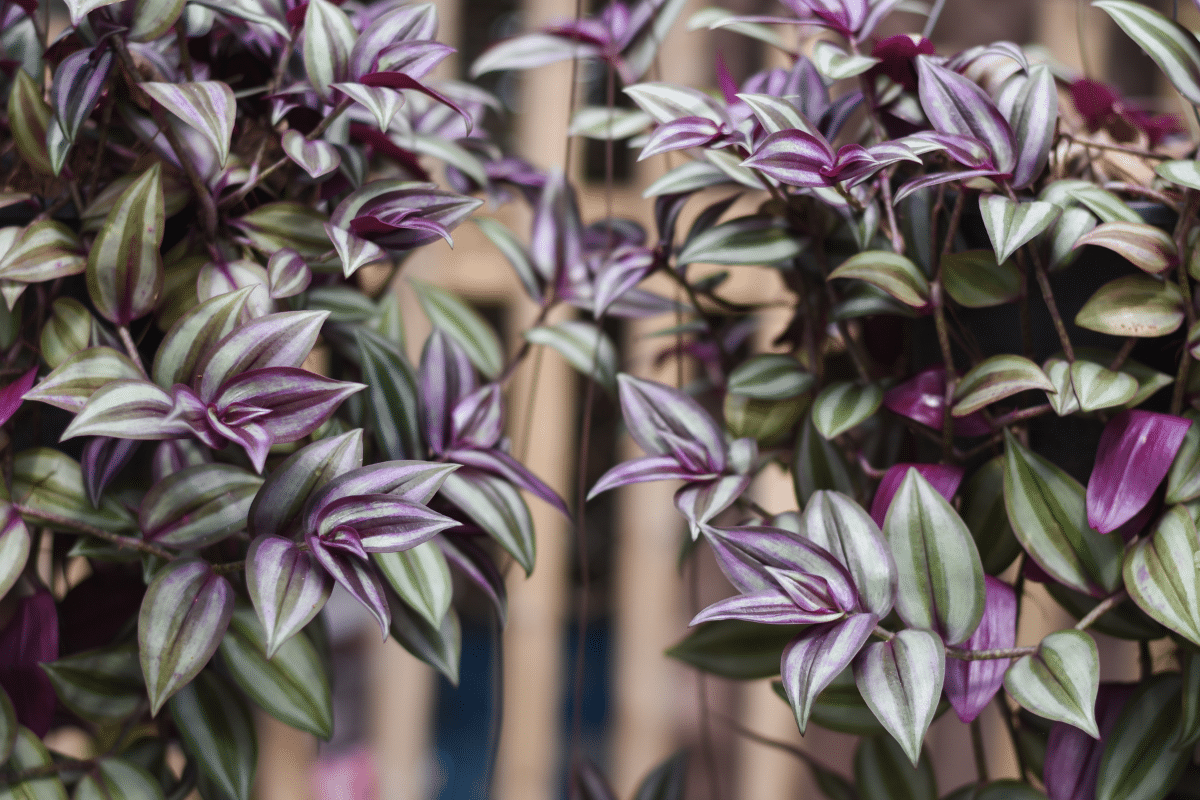
The Wandering Jew thrives in full sun, so to help it grow well, make sure to place it in an area where it can get this. However, note that its vibrant purple color may fade if it gets too much sunlight.
Plant Care for Purple House Plants
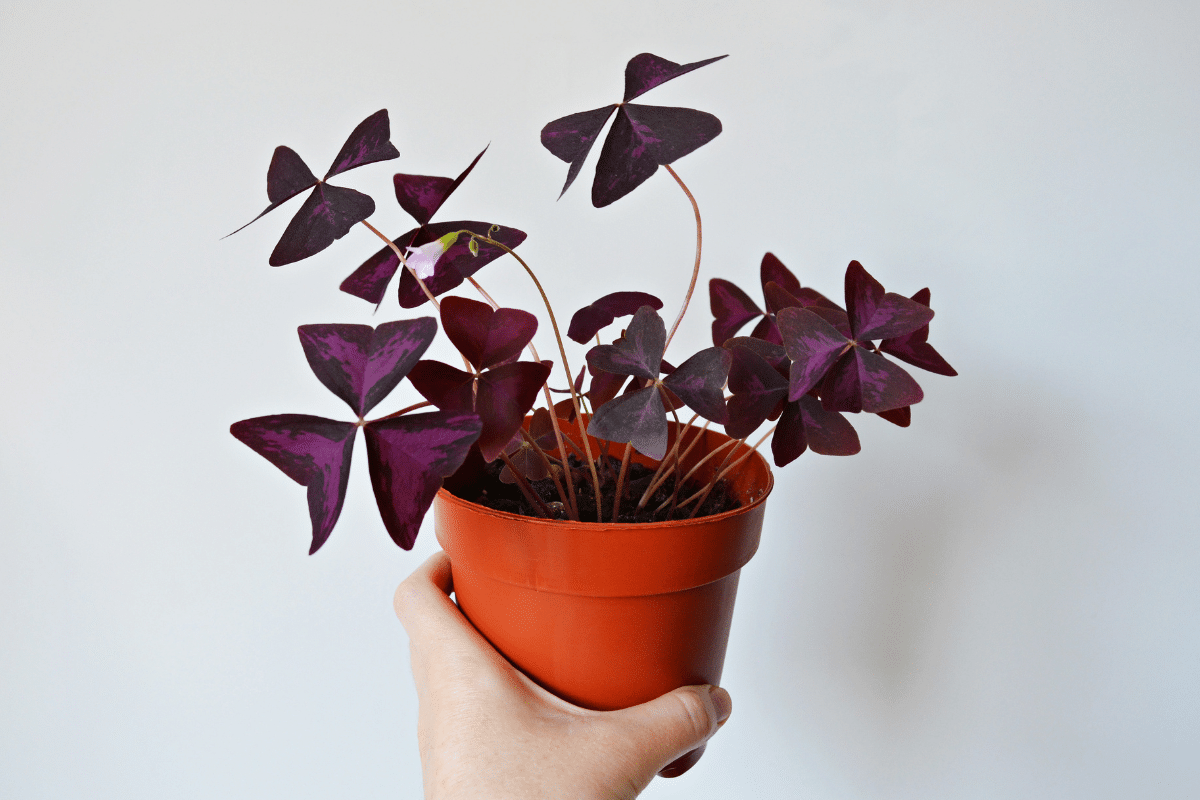
Provide Enough Sunlight
Many species of purple plants thrive in bright, indirect sunlight. A few of them like full sunlight, but too much and their colorful leaves may look dull.
To help your purple plants thrive, give them the right amount of sun they need. It’s best to put them by a window with access to filtered sunlight. Alternatively, you can use grow lights, especially if you’re in an area with limited sun.
Most importantly, whether you’re using grow lights or not, make sure to look out for signs that your plant has too much or too little sun. Many of them are low-maintenance, but helping your plants thrive ensures they stay healthy and gorgeous.
Provide Enough Water and Humidity
Purple plants have specific watering needs. In a nutshell, these species love moist soil but hate being waterlogged. So, when you water your plants, make sure to do it when the top inch of the soil is already dry to the touch.
When it comes to humidity, it may depend on the area where your purple plant originally hails from. If you plan on taking care of tropical purple plants, you need to mimic the temperature and environment of the tropical region.
To help them thrive, you may want to invest in a room humidifier. Alternatively, you can do frequent mistings to mimic a humid environment.
Tips for Growing Beautiful Purple House Plants
Choose the Right Soil
When you’re taking care of any plants, choosing the correct type of soil is crucial.
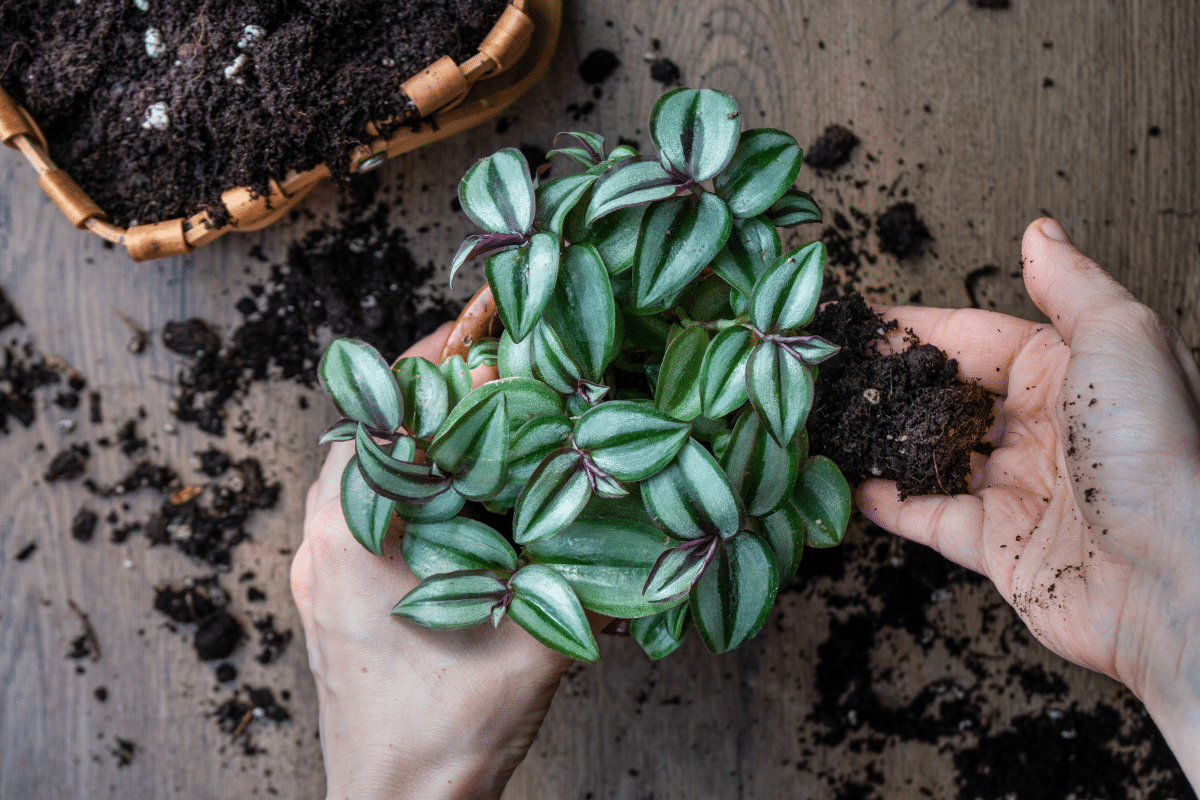
In the case of purple indoor plants, many love well-draining potting soil with a lot of organic matter. As such, you should avoid heavy, clay-filled soils, which can retain too much water and cause root rot.
Ensure Proper Drainage
Since most purple plants don’t like waterlogging, ensure your plant container or pot has enough drainage. When choosing a container, look for those with drainage holes. That will help you avoid waterlogging and root rot.
FAQs
This still depends on the plant species. Most purple plants love indirect sunlight, but some thrive in full sun.
For best results, read up on the specific plant you want to get and learn more about its lighting needs.
Because of its unique and striking appearance, many plant lovers seek house plants in many different shades of purple. Other than just being pretty and unique, purple is also said to be a calming and relaxing color to have at home.
There are times when your plants may struggle with pests and insects. If that’s the case, then the best course of action is to use pesticides, but you must use them safely.
When looking for a pesticide to use against common plant pests, such as mealybugs and spider mites, make sure to get one that’s formulated especially for indoor plants.
When using it, make sure to follow the instructions included carefully. Also, make sure to use the pesticide while wearing protective gloves and in a well-ventilated area.
Make Your Home More Vibrant With Purple House Plants
Purple is a vibrant color, and plants with this color naturally make unique and eye-catching additions to your plant collection at home. Besides their beauty, they also help keep your home’s atmosphere serene and relaxing.
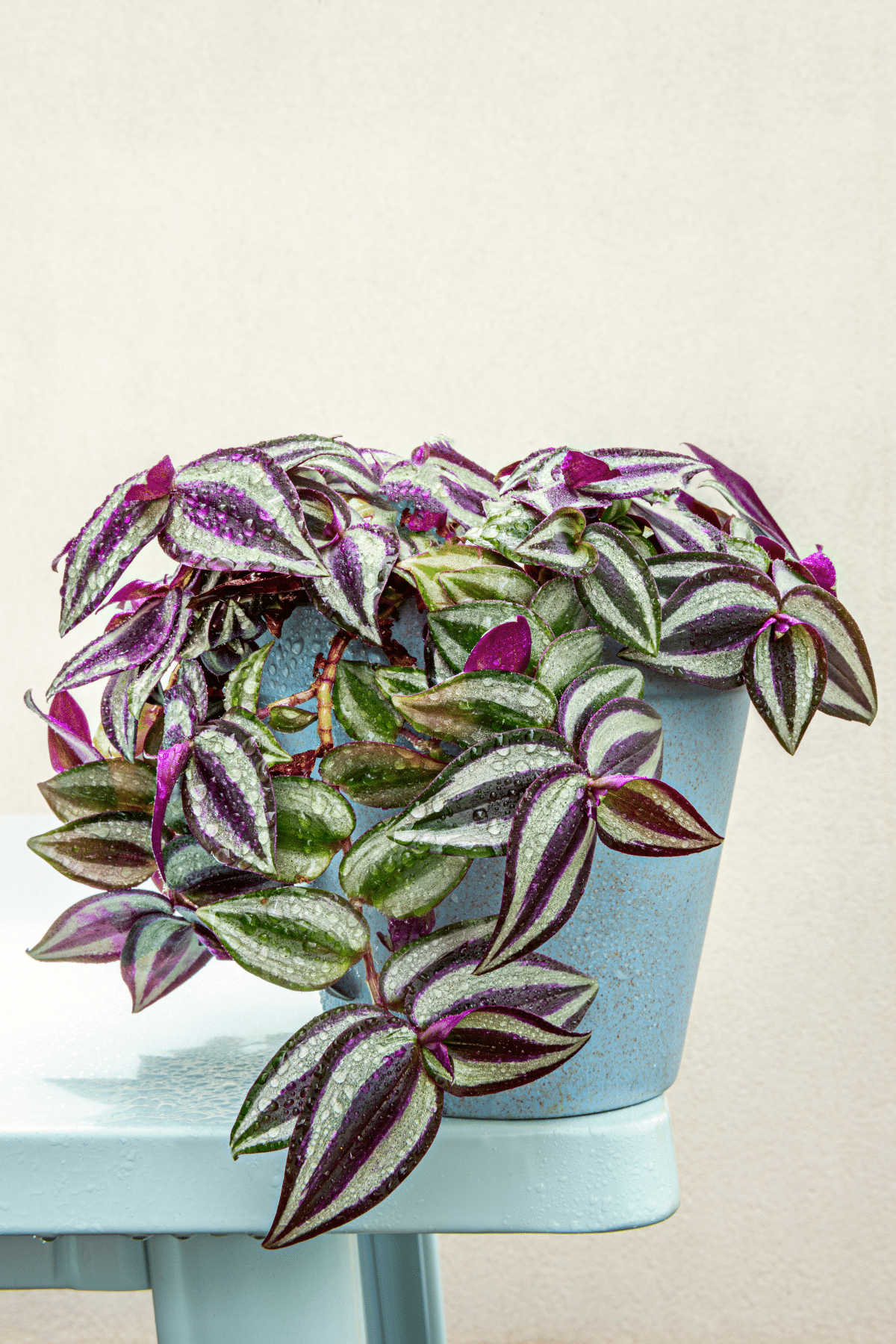
These stunning plants are mostly easy to care for, and all the effort you put into helping them thrive is worth it.

